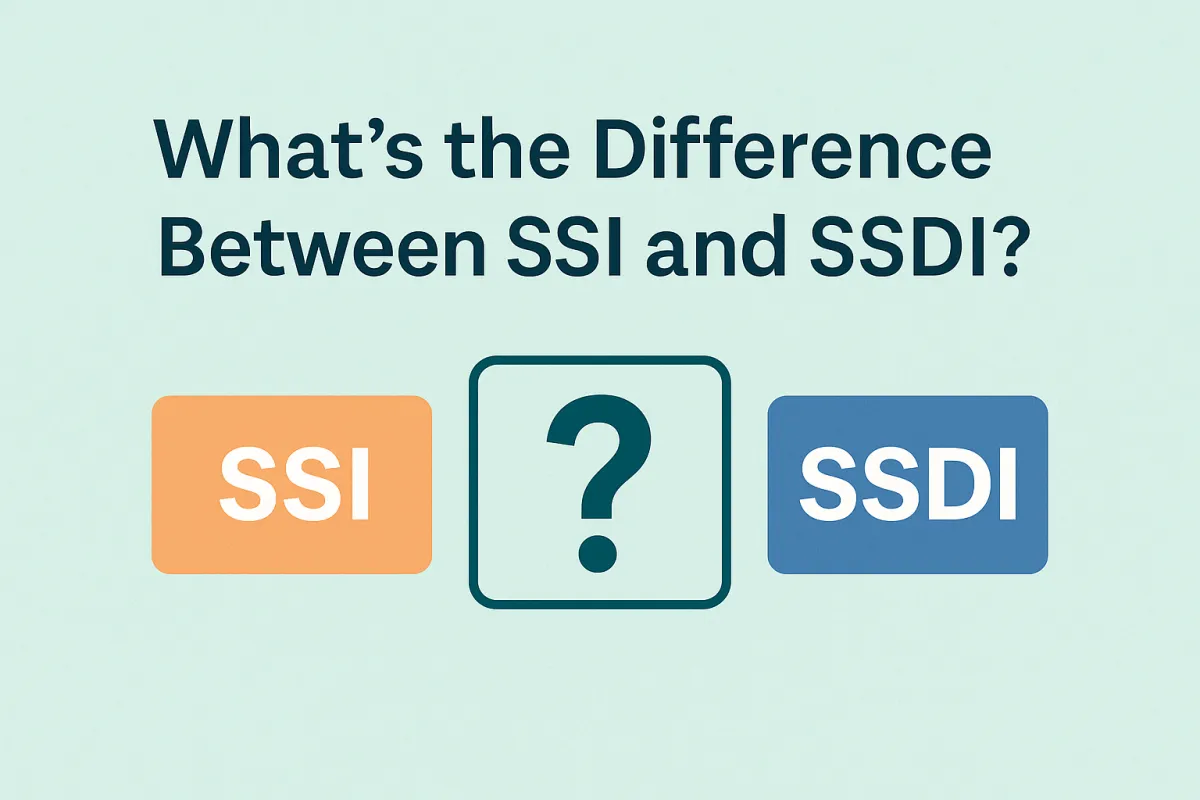
What’s the Difference Between SSI and SSDI?
SSI vs. SSDI: What You Need to Know
If you or a loved one is living with a disability, you may have heard of SSI and SSDI — two programs that provide monthly income to individuals who are unable to work due to a disability. While they sound similar, they are very different in how they’re funded, who qualifies, and what benefits they offer.
Let’s break it down in simple terms.
1. What Is SSDI? (Social Security Disability Insurance)
SSDI is a program for people who have worked and paid into Social Security through their payroll taxes. You earn “work credits” based on your work history — usually about 10 years of work is enough to qualify.
✅ Key Points:
You must have a qualifying disability that prevents you from working.
You must have worked and paid into Social Security.
Benefits are based on your earnings history (not your income or assets).
After 24 months on SSDI, you become eligible for Medicare.
2. What Is SSI? (Supplemental Security Income)
SSI is a need-based program for people who are disabled, blind, or age 65 and older with very limited income and resources. You don’t need a work history to qualify.
✅ Key Points:
You must have a low income and limited assets (usually less than $2,000 for an individual).
Funded by general tax revenues (not Social Security taxes).
Provides a flat monthly benefit (set by the federal government).
SSI recipients typically qualify for Medicaid, not Medicare.
3. The Main Differences at a Glance

4. Can You Get Both SSI and SSDI?
Yes, in some cases, you can receive both SSI and SSDI at the same time. This usually happens when:
Your SSDI benefit is very low, and
You meet the income and asset limits for SSI.
This is called “concurrent benefits.”
5. Why This Matters for Medicare Beneficiaries
If you're under 65 and receiving SSDI, you will automatically be enrolled in Medicare after 24 months of disability benefits.
If you're only receiving SSI and are under 65, Medicaid is your health coverage — not Medicare.
Understanding the difference helps ensure you’re getting the right coverage and benefits.
Final Thoughts
SSI and SSDI may sound alike, but they serve different groups of people. If you’re unsure which program you may qualify for — or how these benefits impact your Medicare or Medicaid coverage — consider speaking with a licensed benefits advisor or social security expert.



